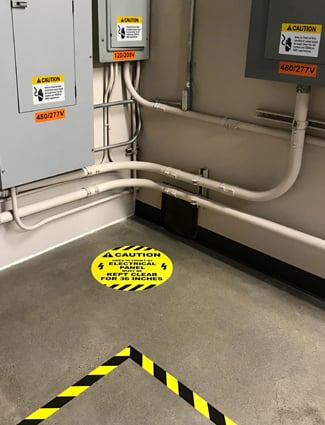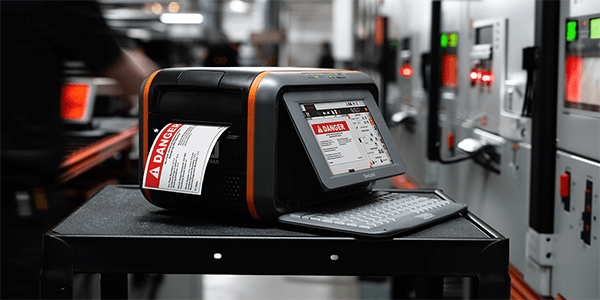Top Uses for Signs in the Workplace

Without signs, how would workers and site visitors know where to exit? Would forklift drivers know where to stop and other traffic instructions? Visual communication is an essential tool that any workplace can utilize for maximum results. Signs might get a lot of downplay yet, their power is well-known in industry for safety, efficiency, and compliance. How should workplaces utilize signs and labels? Businesses can start by having the right messages and in the right spots.
Intentful Messages
The Occupational Safety and Health Administration points out all the details of accident prevention signs and tags in its standard 29 CFR 1926.200 and directs employers to follow additional rules set by ANSI Z535. Sign classifications cover cautions, warnings, dangers, emergencies, and notices.
A new facility in California had a tragic incident in which a 3,000-pound loading dock gate collapsed and pinned a worker underneath. In OSHA's report, the worksite did not have caution signs to warn workers about potential hazards, and workers lacked instruction on workplace dangers.
"Required oversight and communication related to workplace safety and health could have prevented this tragic loss of life," said Derek Engard of OSHA in San Diego. "This case is a painful reminder of why employers must make complying with workplace safety standards a priority."
Signs are easy to use and universal communication methods. Every employer from aerospace and agriculture to warehousing and waste management uses signs for additional goals. Here are the top uses for workplace signs:

- Wayfinding: Which way is the bathroom? Is there a sign for that? Signs are not just for your workers. They also help contractors and other worksite visitors. Wayfinding includes identification signs and markings as well as directional, informational, and regulatory. It also helps with admittance and restricted areas.
- Compliance: OSHA has regulations as well as standards. There are also entities for various best practices such as ANSI/ASME, NFPA, Center for Disease Control and Prevention (CDC), National Institute for Occupational Safety and Health (NIOSH), and Department of Transportation, among others.
- Traffic: Wayfinding touches on traffic control, but signs and floor marking can also be used to control walking/working area traffic, stops, work vehicle speed control, and more.
- Electrical: Industrial control panels are an example of an area where electrical signs are crucial. Signs, labels, and floor marking can communicate safe working distances, voltage, power sources and controls, clearance cautions, and more.
- Chemical: Post warnings about hazardous materials, toxins, and other dangers with our chemical hazard signs.
- Emergency: Signs help identify first-aid stations, fire suppression equipment, emergency exits, eyewash stations, and evacuation routes.
- Equipment: Facilities have various equipment, and signage needs to match. Signs help alert to shut-offs, lockout tagout protocol, pinch points, control panels, and more.
- 5S/Lean management: Streamline organization and efficiency using signs and tags that follow facility color coding. Identify items and their locations, and reinforce sustainment of the 5S/lean management program.
- PPE: Alert workers to PPE storage areas, where and when to use PPE, and PPE disposal areas. These help workers follow protocol as well as worksite visitors.
Have a Sign for that?
No two facilities are exactly alike, so signs and other types of visual communication can vary. Facility managers should routinely conduct an audit to see where they can incorporate new or improved signs indoors and outside. Consider placement and lighting, abrasive or uneven surfaces, freezer or refrigerated settings, and the need for industrial-grade adhesives. When new equipment or processes change, communicate those safety needs. Create messages that not only help prevent potential accidents, but also add security.
Complement your custom signs with our selection of pre-made safety signs, available in various materials and sizes. Need more help? Download our complimentary guide on OSHA signs.
Related Resources

Safety Signs That Wow OSHA and Get Results
One of the most cost-effective tools in a safety arsenal are safety signs. Where should compliance signage ...
Read
Top 10 Uses for DuraLabel Industrial Label Printers
How DuraLabel Printers are Used Across 10 Key Industrial Applications DuraLabel printers are built to solve ...
Read
NYC Plans to Remove Old, Misleading Fallout Shelter Signs
Signs that were posted during the Cold War are still up in places around New York City. These signs are old ...
Read.png)





